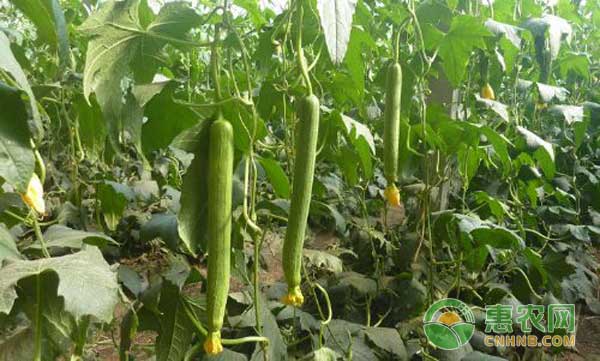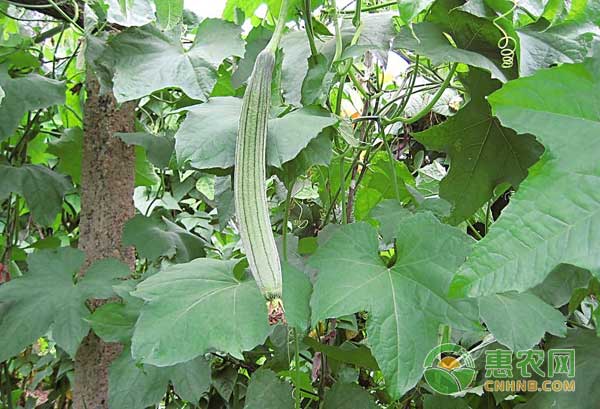The ornamental special long loofah not only has ornamental value, but also has edible value and medicinal value. Ornamental special long-selling loofah has a wide range of cultivation in various regions in the north and south. It has good growth, high yield, excellent quality, long harvesting period and good market prospect. When mature, the reticular fiber of loofah can be used as a cleaning tool and as a traditional Chinese medicine. Consumption has diuretic, blood circulation and other effects. Ornamental loofah is also one of the varieties of vegetables that are widely promoted in modern sightseeing agriculture.
First, the cultivation season
The glass greenhouse is the main form of modern leisure and sightseeing agriculture. It can be cooled in the summer and can be cooled in the summer. The regulation of the internal environment can greatly extend the crop viewing time. Therefore, the ornamental long loofah can be cultivated in the greenhouse all year round and can be provided throughout the year. Watch or pick.

2. Land preparation and soil improvement
Extra long loofah is more heat-resistant, moisture-resistant, hi-fertilized, avoiding alkali, and afraid of drought. Therefore, soil with fertile soil, good drainage and acidity is selected for planting. In the bottom of the cultivation rack, the planting ditch is 70 cm deep and 50 cm wide. The bottom of the ditch is 667 m 2 and the organic fertilizer is 1500-2000 kg, and the compound fertilizer is 60 kg. The remaining part is filled with mixed matrix. The substrate is a mixture of peat: vermiculite:perlite=3:1:1 (volume ratio), and the mixed matrix is ​​a heating organic chicken manure, cow dung, etc. in the matrix, and the volume ratio is matrix: organic chicken manure=30:1, Warm chicken manure and cow dung are beneficial to the increase of matrix temperature and can effectively promote root growth.
Third, the variety selection
Choose varieties that are long, good in commodity, good in ornamental, and strong in strength. Commonly used varieties are giant No.1, Deicai, especially long-sweet loofah, Changfeng long-lost loofah.
4. Soaking seeds and sowing
Wash the seeds with water and then soak them in a 5% solution of 50% keeling (Pythium humilis) WP for 15 minutes, remove them and wash them in water at room temperature for 3 hours to prevent gray mold. After soaking seeds, the loofah seeds are placed in a germination box at a constant temperature of 25 ° C to moisturize and germination. When the seed grows a germ of about 2 mm in length, it is placed in a 12 cm × 12 cm nutrient bowl containing the substrate, and one loofah seed is placed in each nutrient, and a substrate of about 1 cm thick is covered thereon and then covered. Mulch. With the growth of the germ, pay attention to heat preservation, ventilating and light transmission, and prevent high temperature burning, longevity and so on.
V. Colonization
When the seedlings grow to 3 leaves and 1 heart, the seedlings are planted in the planting ditch. The spacing between the single rows is 30 cm. After the seedlings are poured twice, the drip irrigation tube is laid, and the EC value of the common nutrient solution is controlled. At about 2 meters S / cm, usually 5 to 7 days, 3 times a time, 3 times of water.
Sixth, plant adjustment
When the loofah grows to 6 true leaves, it starts to spit and vine. At this time, the vine rope should be hanged from the porch, and the loofah vines are wrapped around the hanging vine. With the growth of the main vines below 1 m side of the vines removed, the leaves on the stems 40 cm above the ground are gradually removed. When the plant height is as long as 1 m, a 40 cm high stem vine is placed on the mixed substrate, and a 10 cm thick mixed substrate is placed on top to make a kneading surface and water is poured while keeping the kneading surface moist. When the disc produces lateral roots on the stems in the matrix, the lateral roots absorb water and nutrients, thereby increasing the supply of water and fertilizer to the whole plant, and ensuring the urgent need for nutrients in the growth period of the loofah. When the stems of the plants climbed to the upper part of the porch, the main vines of the loofah began to leave a side vine when the length of the vines reached 2 meters. The main vines above the side vines began to leave the female flowers, and artificially assisted pollination in the evening. Melon and remove the rest, remove the rest of the flowers to reduce nutrient loss, ensure a loofah grows rapidly, when the melon grows to the expected length, you can not adjust the plant, the normal cantaloupe can be used, timely removal of old leaves, yellow leaves . Generally, a strain of loofah retains 1~2 loofahs and can be extensively managed after being cultivated to a desired length.
Seven, fertilizer management
Foliar fertilizer was sprayed once a week from the start of the stalk of the loofah seedlings, and the result was twice a week. When the stems of the plants climb to the upper part of the porch, the common nutrient solution of the melons is poured, and the EC value is controlled at about 2.5 m S/cm. According to the weather and the dry and wet conditions of the substrate, the nutrient solution is timely poured. In the growth stage, the fertilizer should be frequently applied to meet the needs of the robust growth of the stems, leaves and flowers of the plants. The fermented soybean residue and sesame residue should be used to water the plants at a ratio of 1:30, and the plants should be watered twice a week.
Eight, environmental regulation
The temperature, humidity, light and other conditions can be adjusted in the glass greenhouse as needed, and the concentration of carbon dioxide can also be controlled. Loofah is a short-day crop, which is more sunny and less resistant to light. In the seedling stage, short daylight and large temperature difference are treated, which is beneficial to the flower bud differentiation of the female flower. In the greenhouse, the sun is exposed early in the day to lower the temperature and increase the temperature difference. In the result period, if it is cloudy, it will supplement the light and reduce the influence of weather factors on the growth of melons. Loofah is a thermophilic and heat-resistant crop, and the suitable temperature for growth and development is 20~30 °C. In the summer greenhouse, the temperature is lowered and the heating measures are taken in the winter to ensure the temperature of the growth of the loofah. The loofah is wet, so the air humidity is about 70%, the plant grows well, the growth is slower than 50%, the air humidity is not less than 60%, and the plant grows better when it is 70%~85%. Through the intelligent monitoring system of the greenhouse, timely arrange irrigation and adjust the air humidity.

Nine, pest control
Pest control is based on the principle of “prevention and prevention comprehensive preventionâ€, rational use of greenhouses to regulate internal humidity, temperature, light and other environmental factors, and do a good job in prevention and control.
1, the main disease
1 downy mildew. In the early stage of the disease, 75% chlorothalonil WP 500 times solution is used, and when the disease is severe, 50% ethyl phosphine·manganese zinc wettable powder 500 times solution is sprayed. Downy 2 times a week can effectively control downy mildew.
2 gray mold. Spray with 1500 times solution of 90% carbendazione wettable powder, 1500 times solution of 50% carbendazim (Pythium humilis) or 1500 times solution of 50% Kaiser (pyridinamide) water-dispersible granules .
3 powdery mildew. Powdery mildew is mainly precautionary, and the disease can be sprayed with 10% Shigao (diphenylcarbazole) wettable powder 2000 times or 25% ethylpyrrolidone suspension 1000 times.
2, the main pests
1 cabbage worm, noctuid, etc. Spray with 4% rotenone emulsifiable concentrate 1500 times or 200 times green bacillus suspension.
2 leaf miners. Spray with 1% avermectin suspension 2000 times solution.
Ten, timely harvest
The loofah fruit develops rapidly, and each loofah plant should be harvested in time except for one or two long loofahs. The fiberization of the late harvested loofah will be aggravated, and the gradual aging of the melon will affect the consumption. Under normal circumstances, it takes 10 to 14 days from flowering to commercial tender melon. When the hair is reduced, the body is full, and the skin is soft, it can be harvested. When harvesting, it should be lightly picked and carefully not broken, so as not to affect growth and appreciation.
Ornamental special long loofah greenhouse cultivation technology from the aspects of seedling, planting, fertilizer management, pest control, etc., hope to help farmers who want to develop agriculture and agriculture.
NINGBO YOUHE MOTHER&BABY PRODUCTS CO.,LTD , https://www.oembreastpump.com